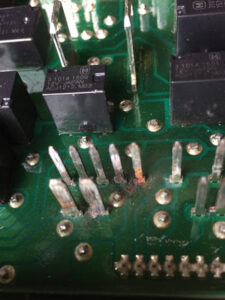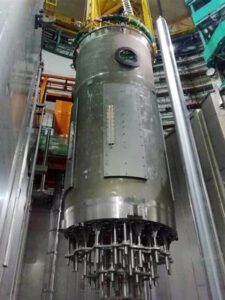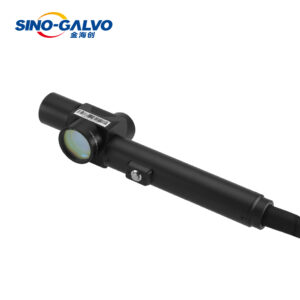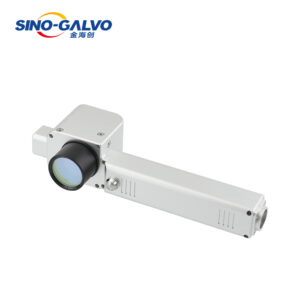Laser cleaning rust removal
What is laser cleaning/laser ablation?
Laser cleaning (also known as laser ablation), refers to the use of high-frequency and high-energy laser beams to irradiate the surface of the workpiece to instantly evaporate or peel off oil, rust or coatings on the surface, thereby achieving a clean laser process.
How does laser cleaning rust removal work?
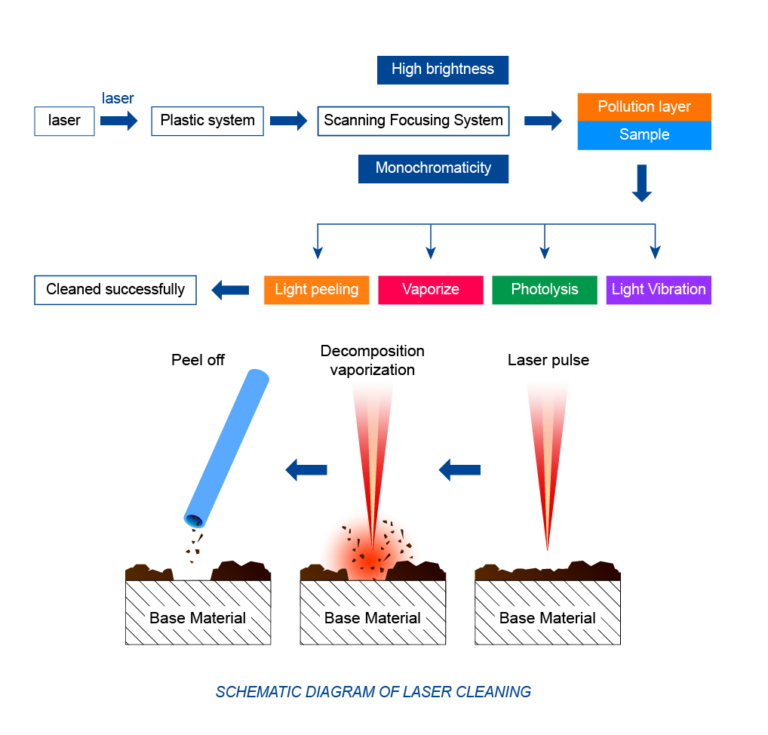
Laser cleaning is to use the characteristics of high laser intensity, high energy density, strong focusing and good directionality to focus the beam to a small area, and use the vibration of the laser pulse, thermal expansion, and molecular photolysis., to overcome the binding force between the dirt and the surface of the substrate, so that the dirt can be separated from the surface to achieve the purpose of cleaning.
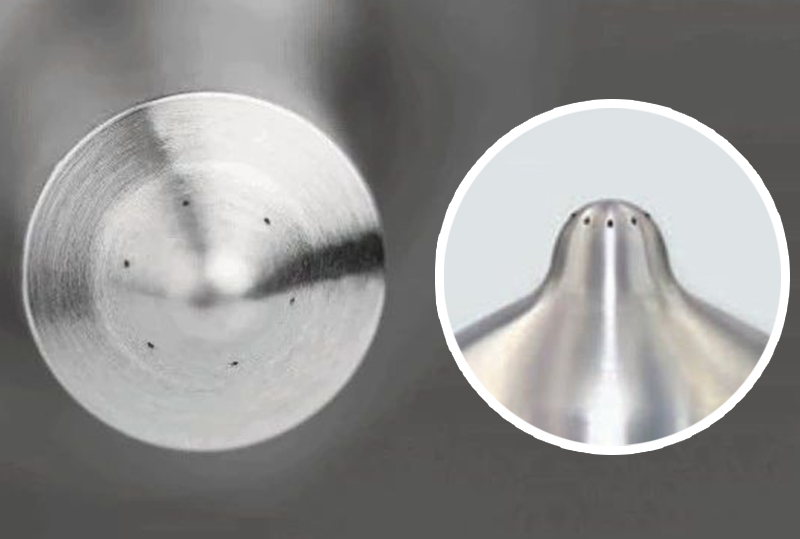
· Photolysis
The laser can be concentrated by the optical system to achieve a high concentration of energy. The focused laser beam can generate a high temperature of several thousand degrees or even tens of thousands of degrees near the focal point, which will instantly vaporize or decompose the attachments on the surface of the object.

· light peeling
Through the action of the laser, the attachments on the surface of the object are heated and expanded. When the expansion force of the attachments on the surface of the object is greater than the adsorption force between it and the substrate, the attachments on the surface of the object will be detached from the surface of the object.

· light vibration
The pulsed laser with higher frequency and power is used to impact the surface of the object, and ultrasonic waves are generated on the surface of the object. The ultrasonic waves return after hitting the middle and lower hard surfaces, and interfere with the incident sound waves, thereby generating high-energy resonant waves, causing the dirt to microburst, smash, off the surface of the substrate.
Why choose laser cleaning rather than traditional techniques?
Compared with traditional cleaning techniques (mechanical friction, sandblasting, jet, chemical), laser cleaning has the following advantages:
Environmental advantages: Laser cleaning is a “green” cleaning method that does not require the use of any chemicals and cleaning fluids, which can avoid environmental pollution problems caused by chemical cleaning.
- Effect advantage: Laser cleaning is non-abrasive and non-contact, avoiding mechanical force with the surface of the cleaned object and damaging the surface of the object. The laser cleaning parameters can be controlled to increase the corrosion resistance of metal devices by 3 to 4 times.
- Control advantage (automatic assembly line): The laser can be transmitted through optical fiber, cooperate with the robot hand and robot, can clean the parts that are difficult to reach by traditional methods (pass), can realize remote control, automation of equipment, form product assembly line operation, intelligent operation , to ensure the safety of personnel.
- Accurate positioning: use optical fiber transmission to guide the laser to make it flexible, and control the light spot to move at high speed through the built-in scanning galvanometer, which is convenient for non-contact laser on the corners such as special-shaped parts, holes, and grooves that are difficult to reach by traditional cleaning methods. cleaning process.
- Cost advantage: high efficiency of laser cleaning, long service life (up to 100,000 hours), low maintenance cost (only need to clean the lens or replace the laser regularly)

What factors will affect the laser cleaning effect?
Laser cleaning method, cleaning model, laser type, laser wavelength, energy density, power, pulse frequency, pulse time and laser incidence angle and other process parameters will have a certain impact on the cleaning effect.
1) Laser type and wavelength
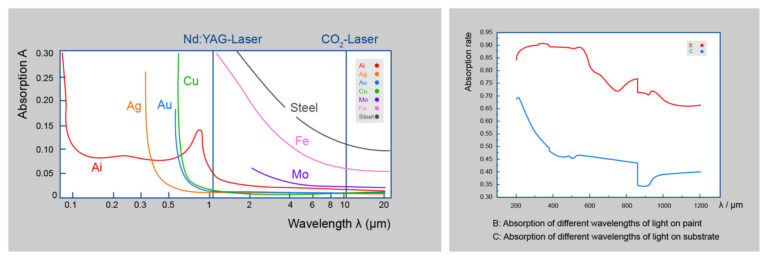
As shown in the figure, when λ=916nm~1200nm, most metals have higher absorption coefficients in this band, and organics have relatively strong laser absorption in this band. Therefore, fiber lasers have unique advantages for the processing of metal materials.
2) Laser incident angle
When the laser is incident at a certain oblique angle, the laser is directly radiated under the adhering particles, resulting in higher thermoelastic stress, and the contaminants are easier to remove compared with normal incidence.
Laser cleaning systems solutions
To meet customer needs, SINO-GALVO offers a variety of Laser Cleaning Systems
Application of Laser Cleaning
Laser cleaning rust removal
What is laser cleaning/laser ablation?
Laser cleaning (also known as laser ablation), refers to the use of high-frequency and high-energy laser beams to irradiate the surface of the workpiece to instantly evaporate or peel off oil, rust or coatings on the surface, thereby achieving a clean laser process.
How does laser cleaning rust removal work?

Laser cleaning is to use the characteristics of high laser intensity, high energy density, strong focusing and good directionality to focus the beam to a small area, and use the vibration of the laser pulse, thermal expansion, and molecular photolysis., to overcome the binding force between the dirt and the surface of the substrate, so that the dirt can be separated from the surface to achieve the purpose of cleaning.

· Photolysis
The laser can be concentrated by the optical system to achieve a high concentration of energy. The focused laser beam can generate a high temperature of several thousand degrees or even tens of thousands of degrees near the focal point, which will instantly vaporize or decompose the attachments on the surface of the object.

· light peeling
Through the action of the laser, the attachments on the surface of the object are heated and expanded. When the expansion force of the attachments on the surface of the object is greater than the adsorption force between it and the substrate, the attachments on the surface of the object will be detached from the surface of the object.

· light vibration
The pulsed laser with higher frequency and power is used to impact the surface of the object, and ultrasonic waves are generated on the surface of the object. The ultrasonic waves return after hitting the middle and lower hard surfaces, and interfere with the incident sound waves, thereby generating high-energy resonant waves, causing the dirt to microburst, smash, off the surface of the substrate.
Why choose laser cleaning rather than traditional techniques?
Compared with traditional cleaning techniques (mechanical friction, sandblasting, jet, chemical), laser cleaning has the following advantages:
Environmental advantages: Laser cleaning is a “green” cleaning method that does not require the use of any chemicals and cleaning fluids, which can avoid environmental pollution problems caused by chemical cleaning.
- Effect advantage: Laser cleaning is non-abrasive and non-contact, avoiding mechanical force with the surface of the cleaned object and damaging the surface of the object. The laser cleaning parameters can be controlled to increase the corrosion resistance of metal devices by 3 to 4 times.
- Control advantage (automatic assembly line): The laser can be transmitted through optical fiber, cooperate with the robot hand and robot, can clean the parts that are difficult to reach by traditional methods (pass), can realize remote control, automation of equipment, form product assembly line operation, intelligent operation , to ensure the safety of personnel.
- Accurate positioning: use optical fiber transmission to guide the laser to make it flexible, and control the light spot to move at high speed through the built-in scanning galvanometer, which is convenient for non-contact laser on the corners such as special-shaped parts, holes, and grooves that are difficult to reach by traditional cleaning methods. cleaning process.
- Cost advantage: high efficiency of laser cleaning, long service life (up to 100,000 hours), low maintenance cost (only need to clean the lens or replace the laser regularly)


What factors will affect the laser cleaning effect?
Laser cleaning method, cleaning model, laser type, laser wavelength, energy density, power, pulse frequency, pulse time and laser incidence angle and other process parameters will have a certain impact on the cleaning effect.
1) Laser type and wavelength

As shown in the figure, when λ=916nm~1200nm, most metals have higher absorption coefficients in this band, and organics have relatively strong laser absorption in this band. Therefore, fiber lasers have unique advantages for the processing of metal materials.
2) Laser incident angle
When the laser is incident at a certain oblique angle, the laser is directly radiated under the adhering particles, resulting in higher thermoelastic stress, and the contaminants are easier to remove compared with normal incidence.
Laser cleaning systems solutions
To meet customer needs, SINO-GALVO offers a variety of Laser Cleaning Systems







